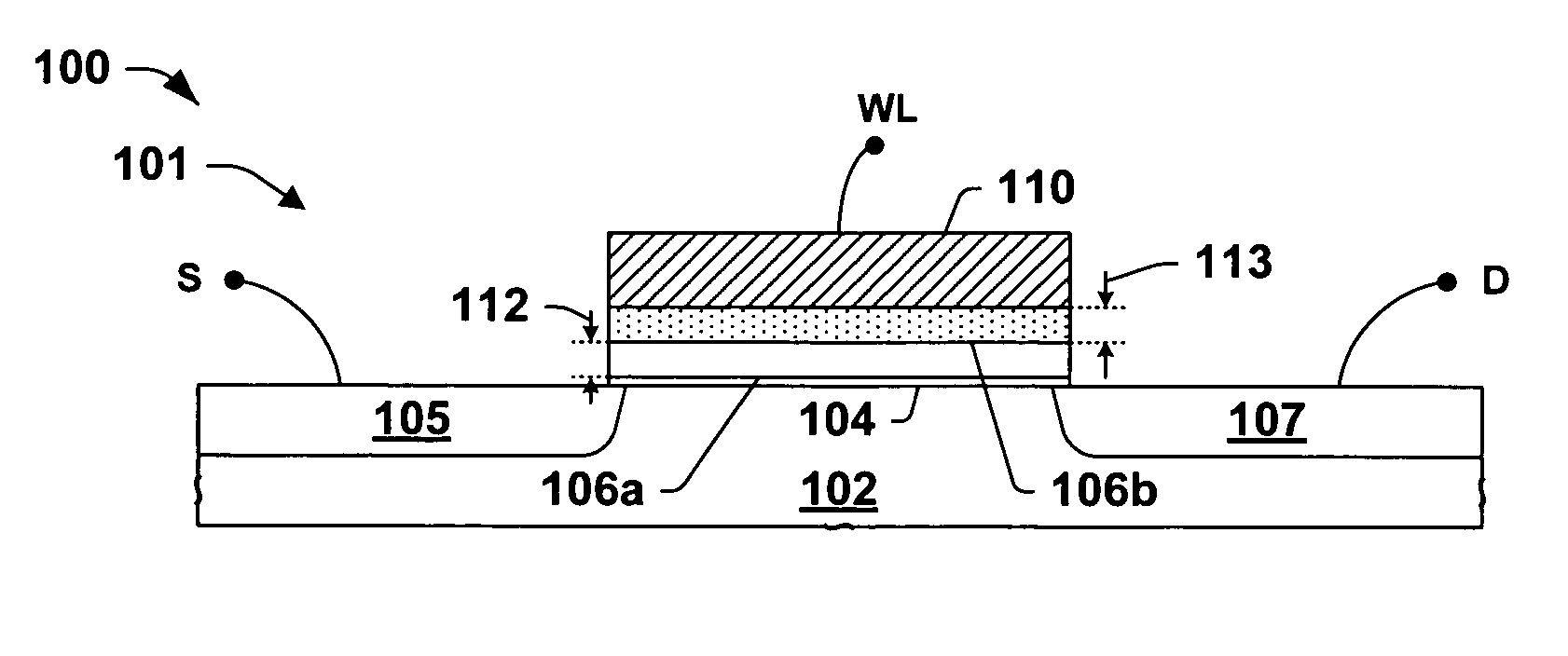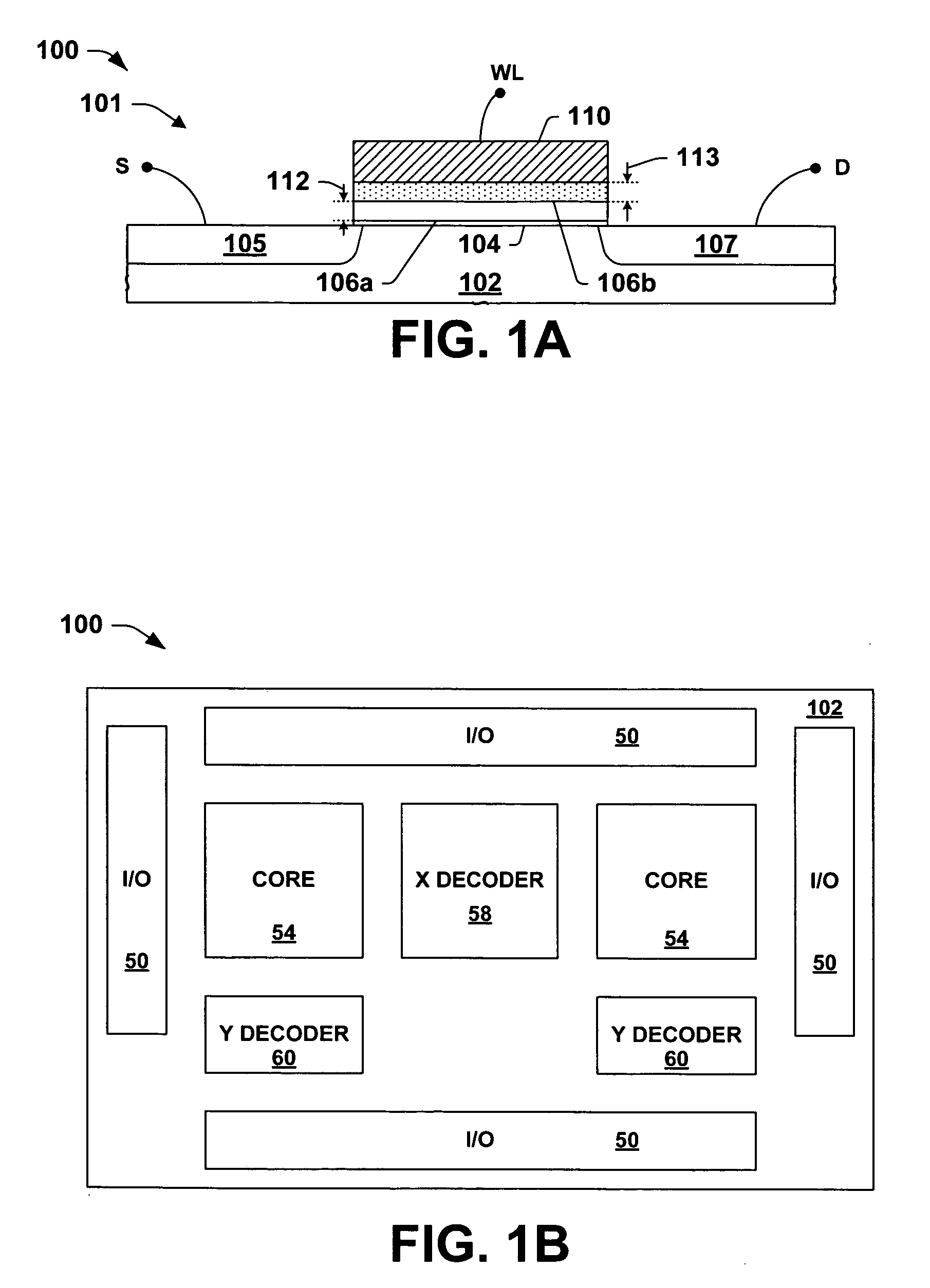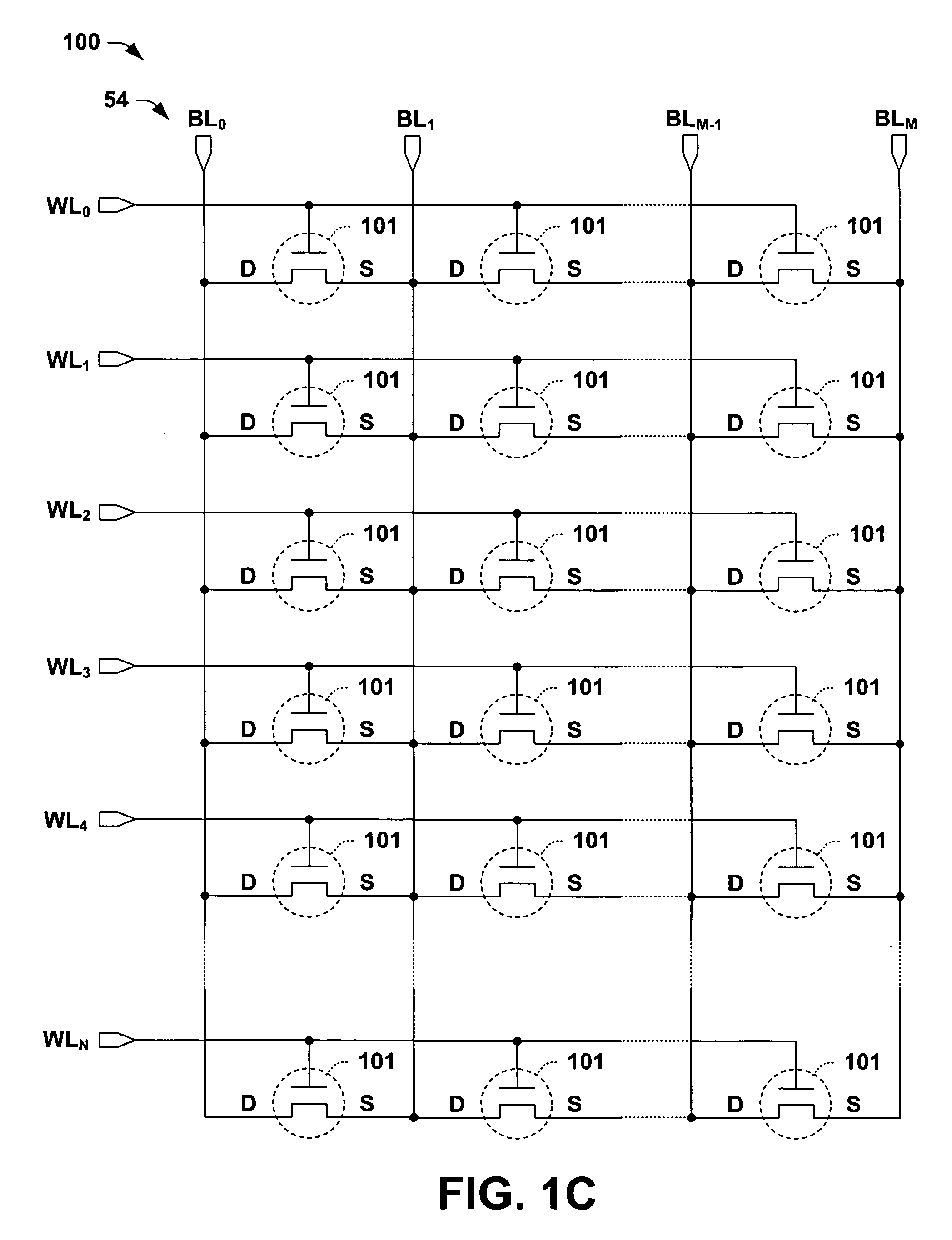Flash memory cell and methods for programming and erasing
a memory cell and flash memory technology, applied in the field of flash memory cells and methods for programming and erasing the same, can solve the problems of charge trapping (e.g., programming) to occur near the source end, and the electron to be trapped in the ono structure, so as to reduce the cell threshold voltage, increase the number of program cycles, and avoid or reduce cell interface damage
- Summary
- Abstract
- Description
- Claims
- Application Information
AI Technical Summary
Benefits of technology
Problems solved by technology
Method used
Image
Examples
Embodiment Construction
[0026] One or more implementations of the present invention will now be described with reference to the drawings, wherein like reference numerals are used to refer to like elements throughout.
[0027] The invention provides flash memory cells comprising a dielectric material formed above a substrate channel region, a charge trapping material formed over the dielectric material, and a control gate formed over the charge trapping material. As used herein, a structure that is formed over another structure is in contact therewith, whereas a structure formed above another structure may, but need not, be in contact therewith. The cells may be programmed by directing electrons from the control gate into the charge trapping material to raise the cell threshold voltage and may be erased by directing electrons from the charge trapping material into the control gate to lower the threshold voltage. The invention may be employed to facilitate scaling efforts, as well as to enhance device enduranc...
PUM
 Login to View More
Login to View More Abstract
Description
Claims
Application Information
 Login to View More
Login to View More - R&D
- Intellectual Property
- Life Sciences
- Materials
- Tech Scout
- Unparalleled Data Quality
- Higher Quality Content
- 60% Fewer Hallucinations
Browse by: Latest US Patents, China's latest patents, Technical Efficacy Thesaurus, Application Domain, Technology Topic, Popular Technical Reports.
© 2025 PatSnap. All rights reserved.Legal|Privacy policy|Modern Slavery Act Transparency Statement|Sitemap|About US| Contact US: help@patsnap.com



